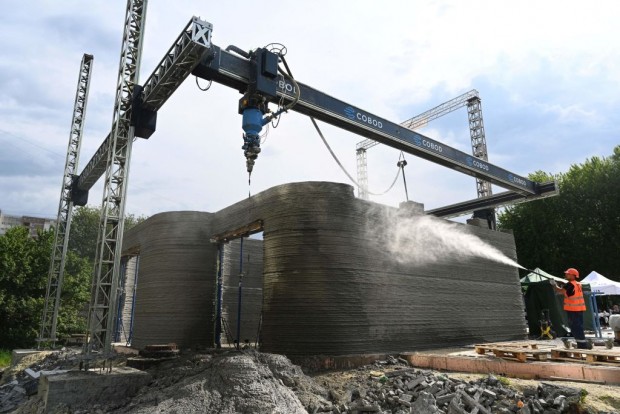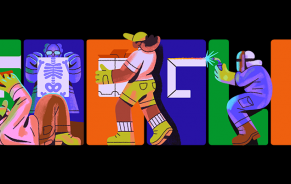
In Ukraine, a children’s school was built in four days by using a 3D printer on-site.
A 3D printer was utilized on-site for the first time to pump concrete and build a 4000-FT2 children's school in Ukraine in just four days.
Ukraine Construction Industry Embraces 3D Printing
3D printing, a revolutionary construction method, is transforming Ukraine's rebuilding endeavors amid Russia's invasion. Over 2,000 schools were damaged or razed, and 277 were obliterated, per Ukraine's Ministry of Education. Team4UA and Denmark's 3DCP Group join forces, leveraging COBOD's BOD2 printer to erect a Lviv primary school.
This innovative approach accelerates school reconstruction, setting a precedent for broader housing and infrastructure revival. The integration of 3D printing expedites educational facility creation, establishing a cornerstone for Ukraine's extensive reconstruction plans.
First 3D-Printed Building in Ukraine
The inaugural 3D-printed school in Ukraine, a 370-square-meter structure built within existing premises, marks a groundbreaking endeavor. A significant feat is the use of 90% locally sourced materials, bolstering both the economy and the local community.
This milestone initiative embodies resilience, securing a nurturing environment and brighter prospects for children. It symbolizes a pivotal stride in reconstruction, showcasing advanced technology's role in societal solutions. The swift construction of this eco-friendly school, utilizing local materials, underscores 3D printing's potential for rapid community revival and educational support.

In Ukraine, a children’s school was built in four days by using a 3D printer on-site.
Jean-Christophe Bonis, founder and chairman of Team4UA, emphasized the project's essence, which is providing education amid Ukraine's conflict and creating an inclusive space for displaced children in Lviv. He stressed the criticality of quality education for the younger generation and the state's future. Innovative approaches, exemplified by the progress of 3-4 days' printing, address the immediate need efficiently.
The initiative aims to swiftly counter the impact of destroyed educational institutions, ensuring a robust foundation for both the children and the nation's future.
Also Read: Vibrant Light Installation Colors Facade of Parliament Building in Austria
3D Printers, Drones, and BIM
Within the field of construction, 3D-printed buildings stand as manifestations of additive manufacturing, crafting intricate structures layer by layer, serving purposes from restoring heritage sites to fostering affordable, eco-friendly housing solutions. Their value extends beyond cost-effectiveness and time efficiency; they promote sustainability by curbing waste and resource consumption.
Yet, within this evolving construction landscape, 3D printing isn't the sole innovation. Robotics and automation redefine labor tasks, ensuring precision while expediting processes. Simultaneously, drones aid in facade inspections and surveying, while Building Information Modeling (BIM) enhances collaboration and visualization, optimizing project management.
Globally mandated, BIM revolutionizes building planning, design, and construction efficiency. It extends post-construction, managing operations with building data, enabling informed decisions for governments, municipalities, and property managers. This Building Information Management empowers sustained efficiency and informed actions, utilizing model-derived insights even after a project's completion for continual improvement in building operations and decision-making processes.
Team4UA and HIVE
Team4UA, backed by Humanitarian Innovative Technologies (HIT), operates in Ukraine, integrating tech solutions into humanitarian aid coordination and initiating 3D printing for rebuilding efforts. HIVE, its pilot project, constructs a new Lviv primary school in partnership with the Balbek bureau, Ars Longa, and Lviv City Council.
Related Aricle: Ancient Buildings Still Standing as Ancient Concrete Mends Its Own Cracks, Can It Be Used Today?

















